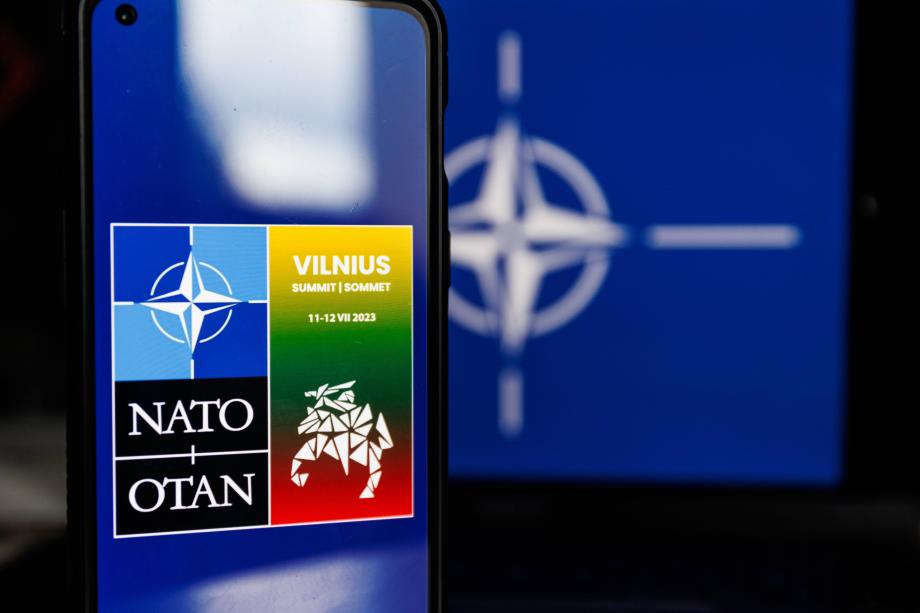After Vilnius, NATO (slowly) shifts Eastwards

Although Ukraine was the most important item on NATO’s summit agenda in Vilnius, some important developments were agreed upon that are shifting the Western military alliances’ focus Eastwards, write Ben Hodges and Marcin Zaborowski.
NATO’s summit in Vilnius, Lithuania, was a missed opportunity to firmly establish long-term security for Europe and the transatlantic area by offering an invitation to Ukraine to join the Alliance.
As long as Ukraine remains outside of NATO, Russia will feel free to attack, continue launching missile attacks, and use the Black Sea fleet to disrupt commerce and grain exports from Ukraine. Instead, we showed that Kremlin, even in its weakened state, can still dictate, to some extent, who can join NATO.
After three decades of Western disarmament and talk of partnership with Russia, NATO is returning to the robust posture at its Eastern flank. The shift is still in the making, but it is happening and Ukraine’s accession to the Alliance will make it complete.
As claimed by NATO’s Secretary-General Jens Stoltenberg, Ukraine was offered some concrete measures to speed up its accession to the Alliance, of which the most substantial is the dropping of the requirement that Kyiv would need to participate in the lengthy Membership Action Plan prior to the actual accession.
This will no longer be necessary, and Ukraine will be able to join the Alliance ‘when Allies agree and conditions are met’. Some other substantial measures included ‘security guarantees’ offered by the G7 nations and packages of defence aid for Kyiv.
Although, it needs to be pointed out that the only tested and reliable ‘security guarantee’ is NATO’s membership.
Ukraine’s disappointment about not being invited to join the Alliance sent a confused signal about the outcome of the summit.
However, the Vilnius meeting has substantially advanced the process that was started in Madrid in June 2022 when the Alliance decided that the Russian invasion of Ukraine means that NATO must adopt a full deterrence posture and be able to defend against Russian threats to the NATO territory.
In Madrid, NATO committed the Alliance to draw up full defence plans in case of a Russian attack, to raise the level of allied presence in the Eastern flank from a battalion per country (around 1,000 troops) to a brigade (3,000-5,000 troops) and to substantially raise defence spending.
It was always clear that the allies would not be able to fulfil these commitments immediately, but a year after Madrid and 16 months since Russia launched its war against Ukraine, the recent meeting in Lithuania marked substantial progress towards this agenda.
Admiral Rob Bauer, chair of NATO’s Military Committee, announced that the defence plans are ready, though, admitted that their implementation may still take some time. Canadian Prime Minister announced the doubling up of the Canadian military presence in Latvia by 1,200 additional troops.
Meanwhile, Germany pledged to raise its presence in Lithuania to a full brigade level, which would be stationed permanently when facilities are built. Spain announced that it will send troops to Slovakia and contribute more troops to Romania.
The Allies are also investing more in defence. As NATO’s Secretary General argued, the defence investment across the Alliance went up by 8.3% since last year, which represents the largest annual increase since the end of the Cold War.
All these measures are material and substantial, but NATO is still some way away from adopting a posture reminiscent of the Cold War readiness which ensured peace on the European continent. During the Cold War, NATO allied presence at the flank nations was much larger (up to 300,000 troops) and permanent.
Today, even with the recent increases, it is still relatively small (around 40,000) and almost exclusively rotational (meaning the troops rotate in and out of the East flank countries).
Smaller numbers are not necessarily the main shortcoming as after all the nature of warfare is different today than it was during the Cold War times as indeed demonstrated by Ukraine’s armed forces.
However, NATO’s readiness will not reach its full potential until the ‘enablement of SACEUR’s area of responsibility’ is adequately addressed. This includes stores of ammunition and availability of fuel and maintenance, more robust host nation support and prepositioned equipment moved further Eastwards.
What is also urgently needed is improved mobility that will enable NATO forces to move as fast or faster than Russian forces in a pre-crises situation to prevent the Russians from making a terrible miscalculation that they might be able to seize a part of a NATO nation before we could get there.
Continued diplomatic and legal hindrance for military convoys and ‘war materials’ crossing borders between NATO/EU nations significantly reduces the ability of NATO forces to move as faster as Russia.
Similarly, the bridges, the roads and the railways are not built to accommodate the swift transport of heavy equipment and large troops numbers from Western Europe to the East flank of the alliance.
Lastly, there is a looming question of the industrial capacity of the NATO nations to produce large numbers of munition and equipment needed for war purposes. As we could see in Ukraine, munition is used faster than we can produce and deliver.
All these shortcomings can be fixed but what is required is a clear political will as expressed in financial investment to order and purchase more ammunition.
As the sensitivities concerning Ukraine’s NATO membership showed, the will to fully deter Russia is still incomplete. Russia will certainly not be deterred by words but by concrete material steps.
As the history of the Cold War demonstrated, Russia steps back and seeks compromise when it is confronted with material evidence and clear Western determination to defend the Allied territory.
Perhaps this lesson should be considered ahead of NATO’s next year’s summit in Washington at which occasion Ukraine will hopefully be invited to join the Alliance.
* the commentary was originally published on Euractiv


FSDC Chairman
Policy Director, Future of Security Programme